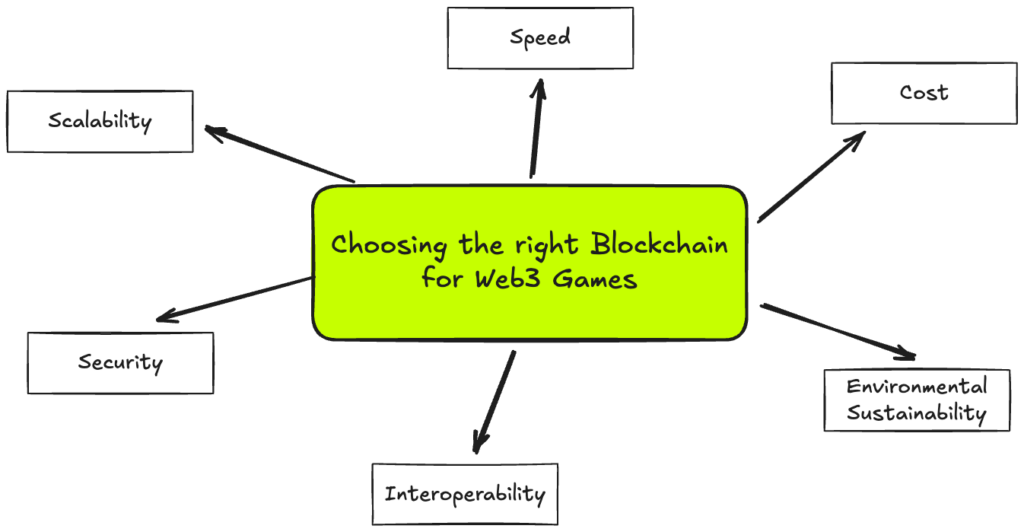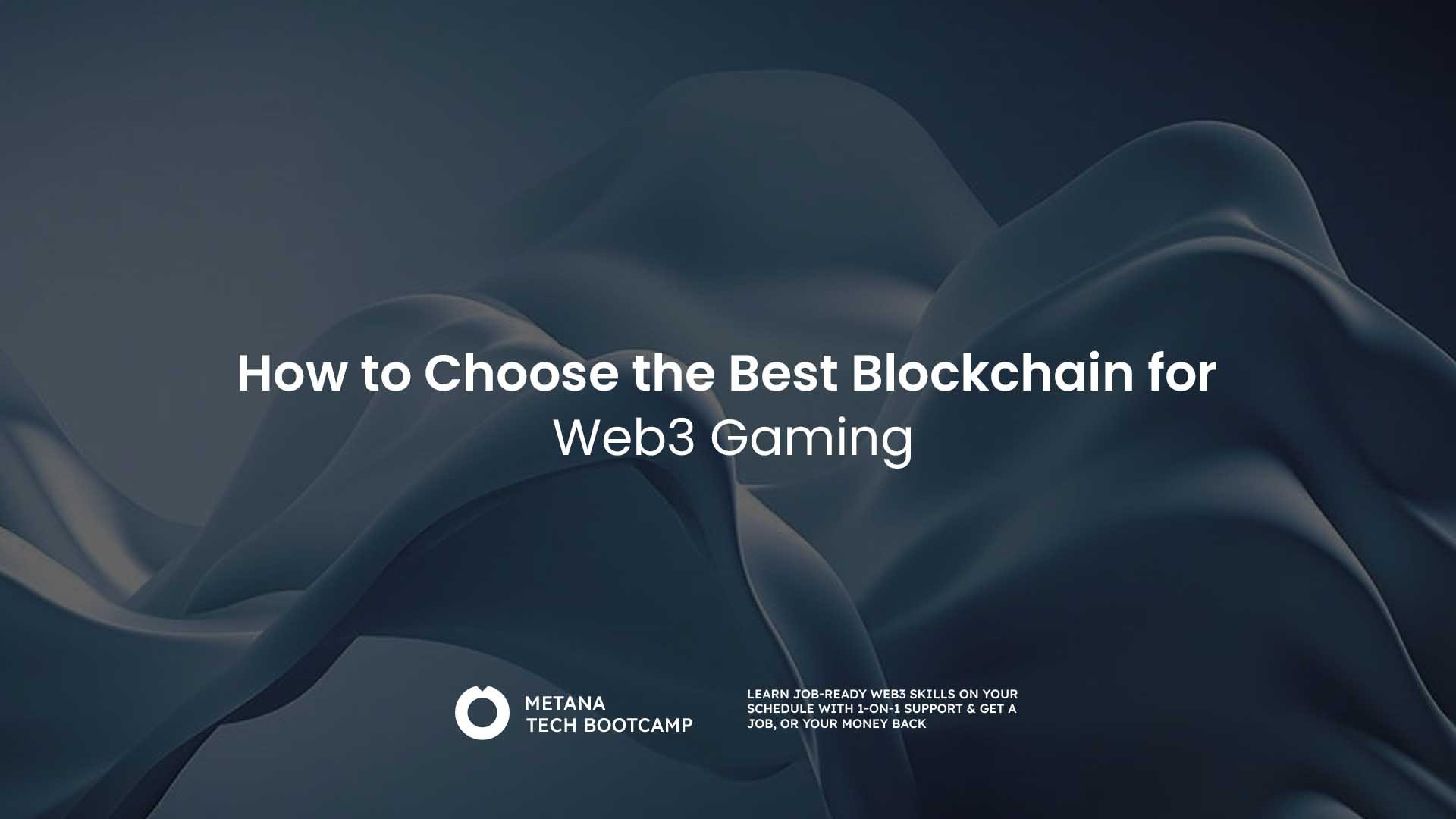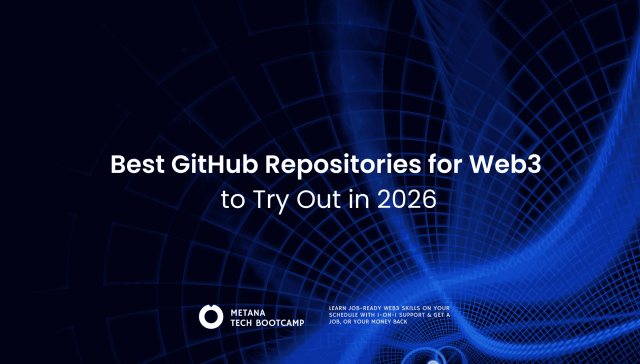TL;DR
- Web3 games use blockchain technology to enable decentralized ownership of in-game assets, allowing players to truly own and trade items like NFTs and cryptocurrencies.
- Blockchain enables transparency, security, and immutability, giving players control over their assets and enabling trustless transactions within decentralized game economies.
- Consider scalability, transaction speed, costs, security, interoperability, and ecosystem support to enable a smooth gameplay and long-term success.
- There is no one-size-fits-all blockchain, choose the one that best fits your game’s needs for performance, affordability, and player experience.
The Web3 gaming industry has rapidly expanded with millions of users engaging with decentralized applications, digital assets, and NFTs through blockchain technology. As more developers enter this space, choosing the right blockchain platform becomes important. The blockchain you select affects gameplay, user experience, and your game’s potential for growth.
In this article, we’ll explore how to choose the best blockchain for Web3 games by considering the key factors. By the end, you’ll have a clear understanding of what to look for in a blockchain that aligns with your game’s needs.
Understanding Web3 Games

Web3 games represent a new era of digital gaming, powered by blockchain technology. Unlike traditional games where assets, progress, and in-game economies are controlled by centralized servers, Web3 games give players true ownership of their items, characters, and currencies. These assets exist as NFTs or tokens, allowing players to trade or use them across different platforms.
One of the biggest innovations in Web3 gaming is the play-to-earn model, where players can earn real-world value through in-game activities. By utilizing blockchain, these games create decentralized, player-driven economies that offer both engagement and financial opportunities for gamers and developers alike.
Rise of Web3 Gaming in Blockchain
Web3 gaming is revolutionizing digital play through blockchain technology. Unlike traditional games, Web3 gives players true ownership of in-game assets like items and currencies, stored as NFTs or tokens, which can be traded or used across platforms.
The play-to-earn (P2E) model lets players earn real-world value, as seen in games like Axie Infinity and Gods Unchained. Blockchain also powers decentralized, player-driven economies, fostering engagement and financial opportunities. Games like Alien Worlds attract hundreds of thousands of players to these vibrant marketplaces.
The Web3 gaming market, valued at $154.46 billion in 2023, is projected to hit $614.91 billion by 2030, with a 21.8% CAGR ( Source: Fortune Business Insights, 2023). Web3 gaming is redefining play, ownership, and earning…join the revolution!
The Role of Blockchains in Web3 Gaming
Before choosing a blockchain for your Web3 game, it’s crucial to understand its role in the gaming ecosystem:
- It acts as the foundation of the system, powering gameplay mechanics and asset ownership.
- Provides transparency, security, and immutability, ensuring fair and tamper-proof interactions.
- Enables decentralization, giving players greater control over their digital assets.
- Allows developers to build custom, player-driven economies that foster engagement and value exchange.
- Helps build trust and long-term sustainability in the game’s ecosystem.
Therefore, selecting the right blockchain isn’t just a technical decision:
- It’s a strategic choice that can shape the game’s performance, adoption, and longevity.
- The blockchain you choose will directly influence the player experience, scalability, and growth potential of your Web3 game.
Important Factors to Consider

When selecting a blockchain for your Web3 game, there are several key factors that must be considered as they can directly impact your game’s performance, user experience, and long-term success. The blockchain you choose will determine transaction speed, scalability, asset security, and the cost of in-game interactions. Understanding these essential aspects will help you choose a blockchain that aligns with your game’s requirements while enabling a smooth and enjoyable experience for players.
Blockchain Comparison Table
| Blockchain | TPS / Finality | Fees | Smart-contract tools | Interoperability | Ecosystem Highlights |
| Ethereum / Layer-2 | Medium / minutes | High …..Layer-2 | Solidity / huge ecosystem | High via bridges | Largest NFT/game ecosystem |
| Polygon | High / seconds | Very low | Ethereum-compatible | Bridges to L1 & other chains | Host many gaming projects |
| Solana | Very high / sub-second | Very low | Rust, limited EVM tools | Growing cross-chain | Real-time games |
| Immutable zkEVM | High / fast | Scalability + low gas | zkEVM compatible | L2 on Ethereum | 380+ games onboarded |
1. Scalability
Scalability is one of the most important factors to consider when selecting a blockchain for your Web3 game. Blockchain networks can process a limited number of transactions per second, and if your game experiences a surge in traffic, this can lead to slow transaction times, higher fees, or even network congestion.
To avoid this, choose a blockchain that can handle large transaction volumes efficiently. Games with frequent microtransactions, NFT minting, or asset transfers need high TPS without compromising security or decentralization. A scalable blockchain enables a smooth gameplay, minimal delays, and lower costs, helping your game grow without technical roadblocks.
2. Transaction Speed
Transaction speed is important for enabling a seamless gaming experience. A slow blockchain can frustrate players who expect instant actions, such as buying in-game assets or trading NFTs. Blockchains with fast finality and low latency are ideal for Web3 games, as they provide near-instant confirmation of transactions.
When choosing a blockchain, look at its consensus mechanism, block time, and overall transaction throughput. High-speed blockchains like Solana and Avalanche offer fast transaction times, making them great options for games requiring real-time interactions.
3. Transaction Costs
Gas fees can significantly impact both developers and players. High fees can discourage users from making frequent in-game transactions, reducing engagement and overall player satisfaction.
To keep costs low, opt for blockchains with minimal transaction fees or those using Layer 2 scaling solutions like Polygon. Some blockchains, such as Binance Smart Chain, offer lower fees than Ethereum, making them a cost-effective choice for Web3 game developers.
4. Smart Contract Capabilities
Smart contracts power the logic of Web3 games, handling everything from in-game asset ownership to marketplace transactions. A blockchain with strong smart contract support allows developers to create more interactive and decentralized experiences.
Ethereum is the most established platform for smart contracts, but alternatives like Flow and Avalanche offer similar capabilities with better scalability and lower costs. Choose a blockchain that supports the programming language and development tools you’re familiar with.
5. Security
Security is a top priority when handling digital assets, in-game currencies, and NFTs. A secure blockchain protects against hacks, exploits, and unauthorized transactions, making sure that players’ assets remain safe.
Look for blockchains with a strong track record of security, a well-audited smart contract environment, and a reliable consensus mechanism. Networks like Ethereum and Binance Smart Chain have robust security measures, while newer blockchains may still be developing their defenses.
6. Interoperability
Interoperability allows assets and data to move between different blockchains, enhancing the flexibility of your Web3 game. Players can use their in-game NFTs and tokens across multiple platforms, increasing engagement and value.
Blockchains like Polkadot, Cosmos, and Polygon support cross-chain interactions, making it easier to integrate multiple ecosystems. If your game relies on multi-chain functionality, consider using a blockchain with strong interoperability features.
7. Environmental Sustainability
As blockchain adoption grows, energy consumption has become a major concern. Some blockchains, like Ethereum relied on energy-intensive proof-of-work mechanisms, while others, like Solana and Flow, use eco-friendly proof-of-stake or other efficient consensus models.
Choosing a sustainable blockchain helps reduce environmental impact and aligns with the growing demand for eco-conscious gaming. If sustainability is a priority, consider PoS-based blockchains or those with carbon offset initiatives.
8. Ecosystem and Developer Community
A strong developer community and ecosystem support make it easier to build, launch, and scale your Web3 game. Blockchains with active communities provide better documentation, developer tools, funding opportunities, and access to a wider player base.
Ethereum has the largest developer ecosystem, but newer blockchains like Flow and Avalanche are rapidly growing. Choose a blockchain with strong community support, regular updates, and active developer engagement to enable a long-term success for your game.
Popular Blockchains for Web3 Games

The Web3 gaming industry offers various blockchain platforms, each designed with unique features to meet different game requirements. Selecting the right blockchain is essential for enabling faster transactions, lower costs, and secure asset management.
There are several blockchains that stand out as top choices for Web3 game development. The following are some of the most popular ones.
| Ethereum | The most popular blockchain for Web3 gaming, known for smart contracts and NFTs. However, high gas fees and scalability issues push developers to explore alternatives. |
| Binance Smart Chain | A cost-effective Ethereum alternative with low fees and fast transactions. Its Ethereum compatibility makes deployment easy for developers. |
| Polygon | A Layer 2 solution for Ethereum, offering low fees and fast transactions while maintaining Ethereum’s security and ecosystem benefits. |
| Solana | A high-speed blockchain with low fees, ideal for large-scale Web3 games. Its unique Proof of History consensus enables high throughput. |
| Flow | Designed for gaming and digital collectibles, Flow offers high scalability and low costs. Used by popular games like NBA Top Shot. |
| Avalanche | A fast, low-cost blockchain with sub-second finality, perfect for Web3 games requiring quick and frequent transactions. |
Bottom Line
Choosing the right blockchain for your Web3 game is important for its success, affecting user experience, scalability, and engagement. By evaluating factors like scalability, transaction speed, security, and cost, you can select a blockchain that fits your game’s needs.
No single blockchain is universally the best, it depends on your specific requirements. Whether you opt for Ethereum’s vast ecosystem or Solana’s speed and scalability, the right choice will provide a strong foundation for your Web3 game.
FAQs
How blockchain is used in the gaming industry?
Blockchain is used in gaming to give players true ownership of digital assets, enable play-to-earn rewards, and create decentralized economies. Players can earn, trade, and even use in-game items across different games. Transactions are recorded transparently on the blockchain, reducing fraud and improving trust. Some games also let communities vote on game updates through DAOs (decentralized autonomous organizations).
How do I know if a blockchain is scalable enough for my game?
- Look for a blockchain with high transactions per second and low latency. Evaluate the platform’s past performance during peak usage times to see if it can handle large numbers of transactions without slowdowns or congestion.
Which blockchain is the best for NFTs in games?
- Ethereum is the most popular blockchain for NFTs, but alternatives like Flow, Polygon, and Binance Smart Chain also offer solid NFT support with lower fees and faster transactions. Choose based on your needs for scalability and user experience.
Can I use multiple blockchains for my Web3 game?
- Yes, many games today use multiple blockchains to enable interoperability and tap into different networks for specific use cases. Layer 2 solutions and cross-chain bridges can help facilitate interactions across different blockchains.
How do I manage transaction fees in my Web3 game?
- To manage transaction fees, choose a blockchain with low gas fees, use Layer 2 scaling solutions, or subsidize costs for players. Optimizing smart contracts can also help reduce fees, enabling a smoother and more affordable gaming experience.








